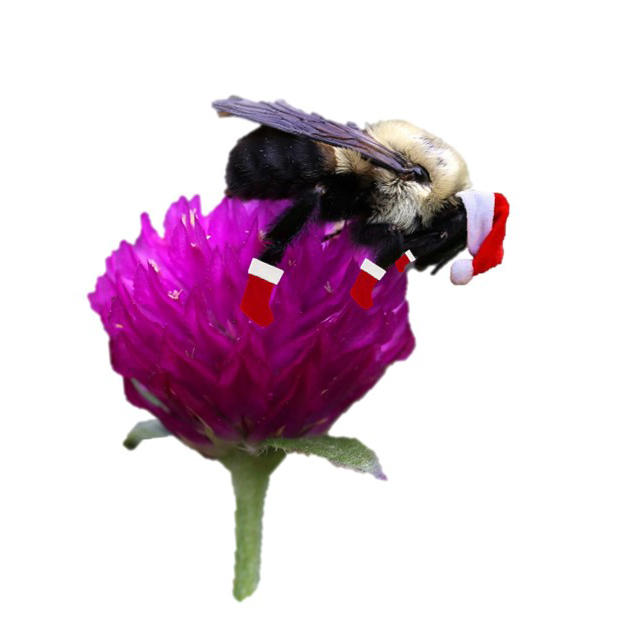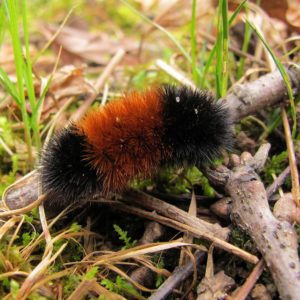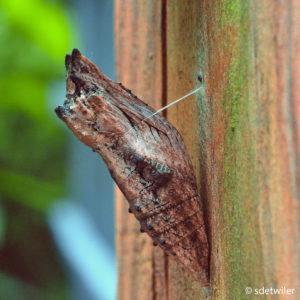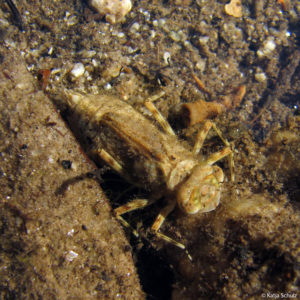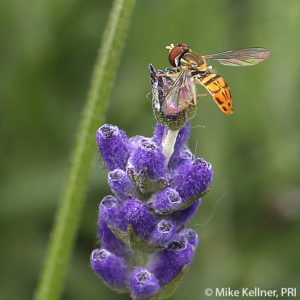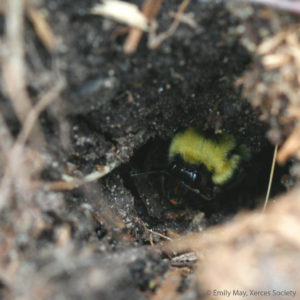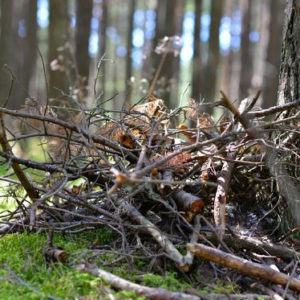Insects are conspicuous by their absence during Iowa’s winter months. Absent are the beauty of butterflies, and we would be shocked to hear a bee buzzing around our snowy apartment balcony on Christmas Eve. So where did they all go? Did they perish from freezing temperatures? Have they all migrated south with the eastern monarch butterflies?
Here in Iowa, we have many insects that use truly astonishing techniques to stay here throughout the winter, braving the cold with the rest of us. From smart hiding places and suspended animation to making their own antifreeze, Iowa’s insects have developed some pretty wild adaptations to weather the winter!
Note: Iowa has many insects that undergo “suspended animation”, technically called diapause, to survive winter. Diapause is an insect form of hibernation where the insect pauses development; it stops maturing and halts all activity. It remains in its’ current life stage (which could be egg, larva, nymph, pupa, or adult) until conditions become favorable again and they can continue growing or start mating/laying eggs.
Wooly bear caterpillars: These fuzzy little guys will mature to become the Isabella tiger moth. They stare winter down by allowing themselves to freeze, but on their own terms! They seek shelter under logs and leaf layers. Once safe, they go into diapause and slow down the freezing process by creating glycerol, a natural alcohol and one of the many insect forms of “antifreeze”. They slowly allow their entire bodies to freeze except the insides of their cells.
Black swallowtail butterflies: These beauties stay cozy in their chrysalis while the snowflakes fall, entering diapause at the pupal stage. Their chrysalis mimics a dead leaf to keep them safe from predators, so be careful when cleaning up your lawn – especially if you grew dill, parsley, or other plants related to carrots in your garden! If you must move leaves, try not to chop/mow them to ensure you can enjoy the swallowtails next summer!
Dragonflies: Dragonflies brave the winter in a few different ways depending on the species. Some overwinter as eggs laid in logs near ponds, and others actually migrate. But one of the coolest ways some overwinter is as underwater nymphs (an immature stage of a dragonfly)! The dragonfly nymphs stay underwater beneath insulating ice layers, where they are voracious predators true to their namesake (even eating small fish!). They eat and grow throughout the winter until they can emerge as adults in the summer.
Flower flies: Also known as syrphid flies or hover flies, flower flies are a family of flies (called “Syrphidae”) that are fantastic garden helpers: when young they eat aphids, and as adults they pollinate. Here in Iowa, they’re commonly referred to as “sweat bees” due to their black and yellow stripes and the fact that they sometimes land on sweaty humans (sweat contains good nutrients for them). However, these flies only mimic bees, and cannot sting or bite (their mouth basically consists of a tiny mop). They survive the cold much like other insects; they find shelter in leaf layers and other plant material, enter diapause and overwinter as a larva, pupa, or adult depending on the species. Flower flies are no pansies!
Bumble bee queens: Bumble bee hives only live for one year, unlike honey bees. Near the end of the hive’s life, new queens and male bees (“drones”) hatch and leave the hive to mate. When hive activity finally ends, the drones die while the newly-mated queens search for a warm winter home alone. Their new homes could be in leaf layers, warm compost piles, or just a few inches underground in a sheltered place! While winter winds howl, the entire fate of next year’s bumble bee hives rests on these young queens surviving the winter all alone. When it warms again, if all goes well, they will wake from diapause and emerge to start their very own hives to begin the cycle again.
How Can You Help?
As you can see from these few examples, surviving winter is key to us enjoying pollinators and other insects next year. So many insects rely on the shelter of leaves, logs, and other materials to block the cold wind and insulate them from freezing temperatures. Therefore, one of the best ways to help pollinators this winter, and to ensure there are pollinators this summer, is to find a place in your yard or balcony where you can let leaf litter and plant material accumulate. Think of it as a Cozy Corner that may harbor young bumble bee queens, sleeping swallowtails, and fuzzy wooly bear caterpillars. Give insects the gift of cozy this holiday season!
See below for more information on how to build your very own Cozy Corner:
Create a “Cozy Corner”
You can create a “cozy corner”, or brush pile, for pollinators throughout the fall and winter by choosing a location to leave leaf litter undisturbed. You can add twigs, branches, and other brush to the pile as you clean up the other areas you want clear of brush. You can also leave potted plants on your balcony or patio and push them together to create a small shelter; I’ve found moths sheltering in my flowerpots in mid-fall, and I’ve noticed more bird visitors! Add layers of brush to your cozy corner to provide the best shelter possible. Click here to read the full article from which this paragraph was based on.
How-To Guides to Create Your Very Own Cozy Corner:
- Bird Brush piles: The Audubon Society’s Website
- General Wildlife Brush pile: Article by the Wisconsin DNR

